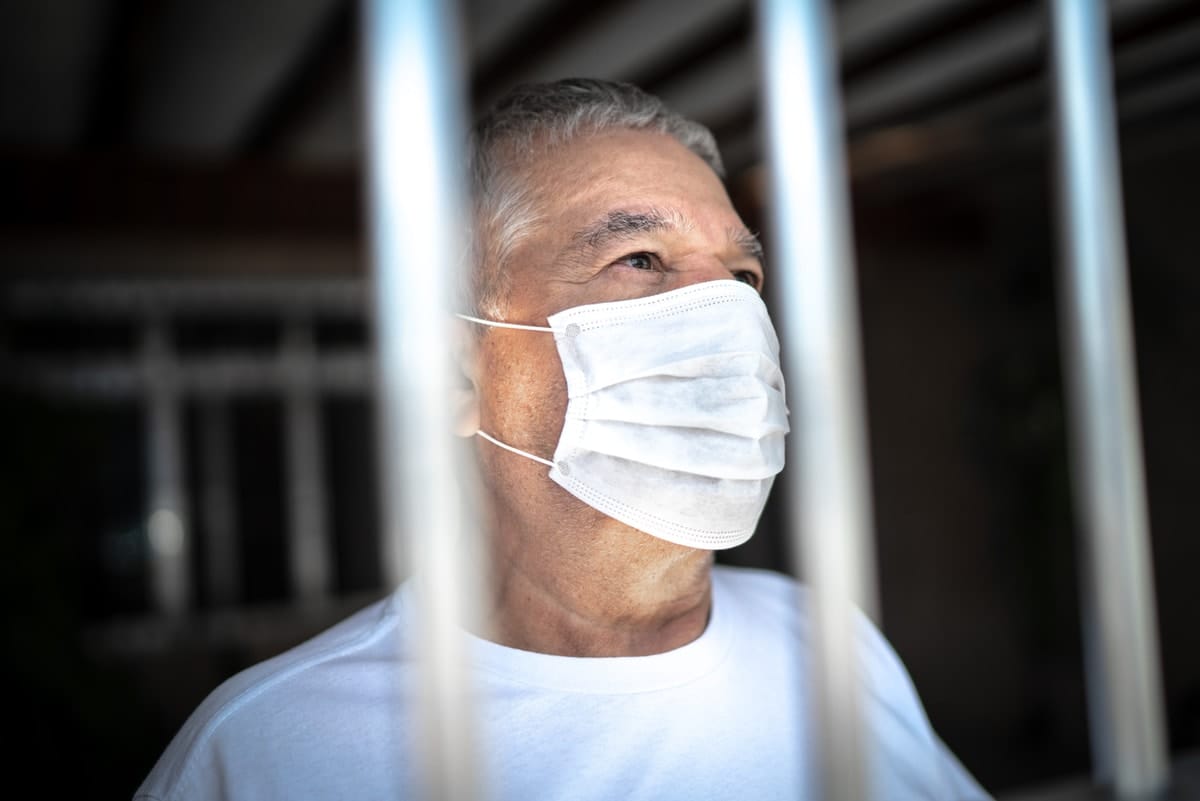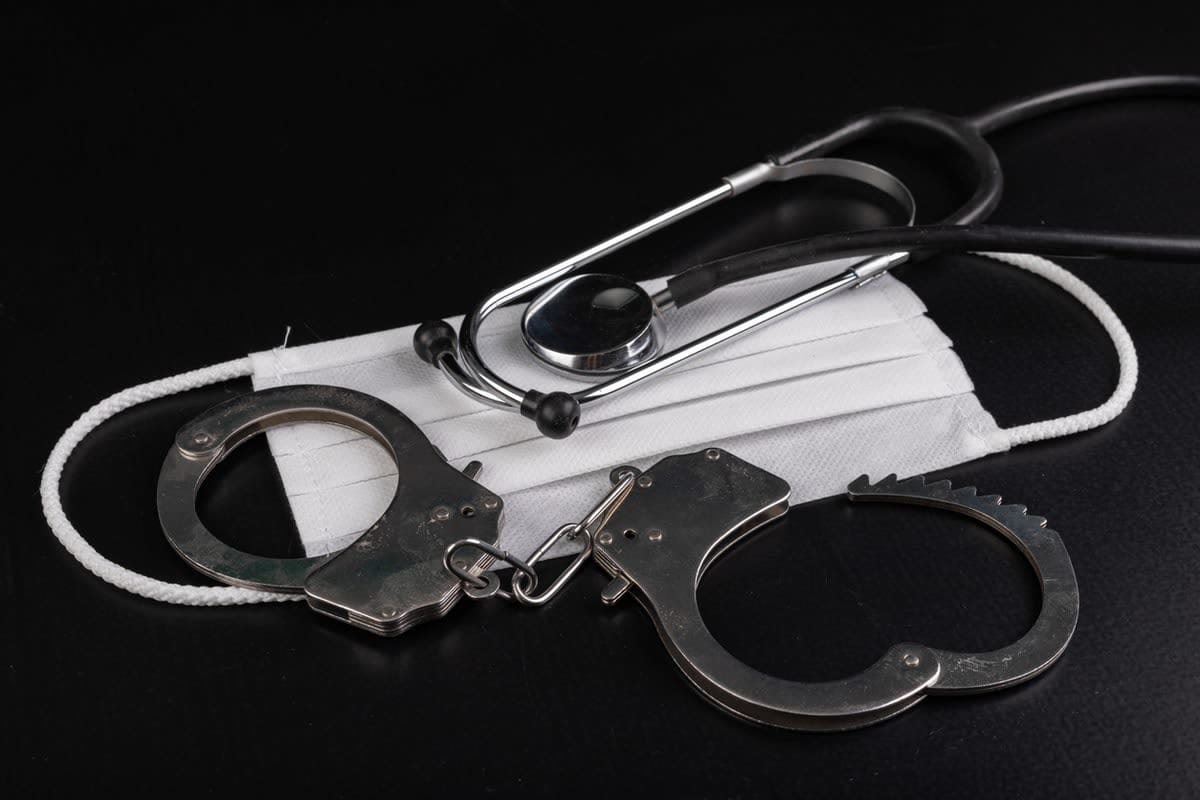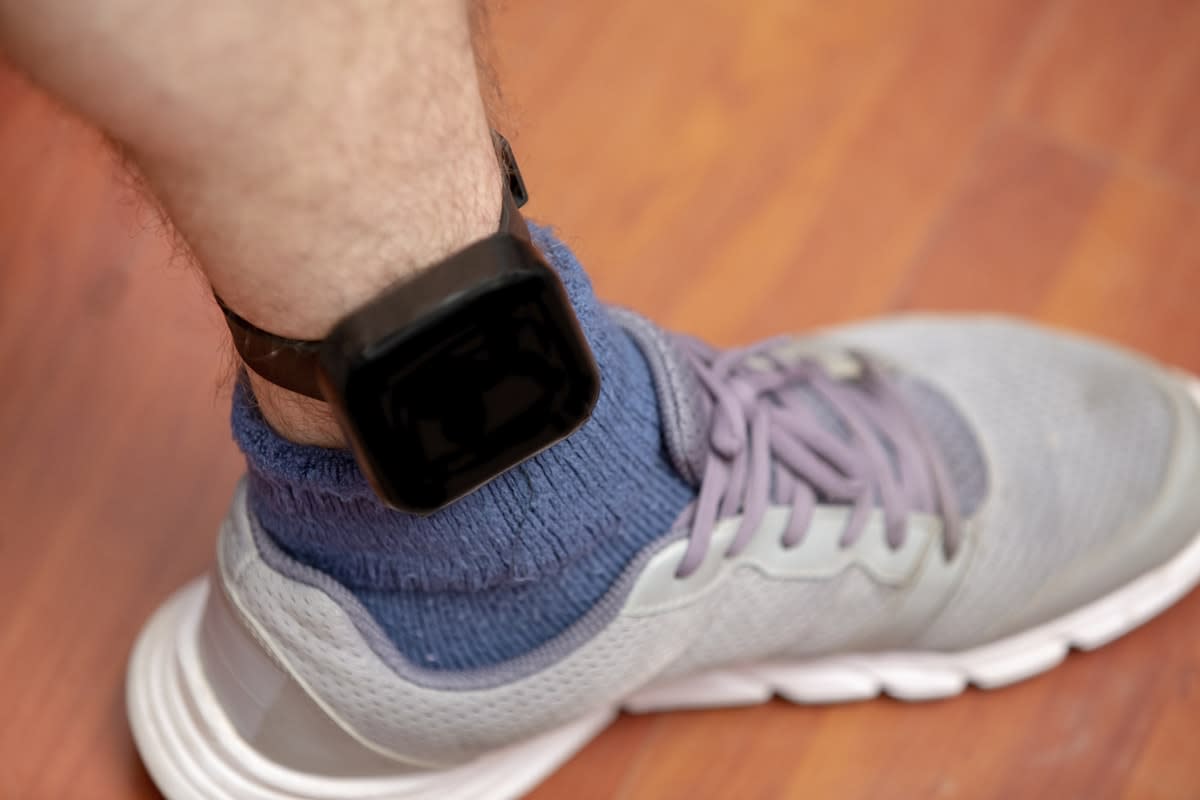
The March 2020 declaration by the World Health Organisation of the novel coronavirus as a pandemic had significant repercussions internationally and domestically.
Governments around the world scrambled to implement restrictions in an attempt to “flatten the curve”, aimed at limiting the virus’ spread.
We’re all familiar with these restrictions – directing people to stay at home; to practise “social distancing”; and to impose limitations on the number of people who can gather indoors or outdoors.
Their imposition has had a substantial effect on people individually, and as part of broader communities.
COVID-19 and prisons
These restrictions pose significant challenges for the criminal justice system in general, and for prisoners and prisons management in particular.
Social/physical distancing in prisons isn’t possible in the way that it is in the broader community. Prisoners have been described as “sitting ducks for COVID-19”, and the environment of prisons has been likened to “cruise ships, migrant workers’ dormitories, and nursing homes”.
Although to date there’s been no reported incidents of COVID-19 in the Australian prison population, once the virus is found in any of the prisons, “transmission between prisoners will be significant and likely to occur at a much greater rate than the transmission that is occurring in the community at present”.
Even with the introduction of significant restrictions, human-to-human transmission would likely be exponential due to a number of factors unique to the prison environment.
- First, prisons by their nature house a large number of individuals within a confined space, and in some cases may be overcrowded.
- Second, many prisoners are an at-risk group because of underlying medical conditions that may make them more susceptible to contracting COVID-19 – “almost one third of people entering prison have a chronic medical condition like asthma, cancer, cardiovascular disease, diabetes, or live with disability”.
- Further, although international standards dictate that prisoners ought to receive the same standards of healthcare as the broader community, the reality may be very different. Prisons typically don’t have proper hospital facilities. This means that for prisoners who require hospital-grade medical assistance, transportation and supervision needs to be organised, which can place additional strain on resources.

Early release of prisoners
“Imprisonment should be a measure of last resort, particularly during this crisis.”
– Michelle Bachelet, UN High Commissioner for Human Rights
For this reason, governments around the world have been contemplating releasing prisoners in an attempt to reduce the risk of infection, prioritising those who are potentially at most risk of serious harm from COVID-19.
The United Nations High Commissioner for Human Rights, Michelle Bachelet, has urged governments to release prisoners who are particularly susceptible, including older prisoners, and those who are low-risk offenders.
Some governments have started this process. For example, in the US, Attorney General William Barr directed the Federal Bureau of Prisons to identify those prisoners who are at risk, but are also “non-violent and pose minimal likelihood of recidivism, and who might be safer serving their sentences at home”, albeit pursuant to strict conditions.
New York, Los Angeles and Cleveland have released “hundreds of inmates”. Similar release of prisoners has occurred in Ireland, Iran, Turkey and the UK.
In Australia, although no state government has released prisoners to date, a number of governments have considered doing so. For example, the New South Wales government has enacted emergency legislation that provides the Corrections Commissioner with the authority to release prisoners who are vulnerable and pose a low risk to the community.
The disruption caused by COVID-19 to the prison system raises the question as to whether prisoners who pose minimal, if any, risk to the community, and have committed low-level offences, ought to have been imprisoned in the first place?
The legislation requires a prisoner for potential release to belong to a “class of inmates, defined according to: the offence committed by the inmate; the period remaining before the end of their sentence or non-parole period; age, health or vulnerability of the inmate; and any other matter”. Other relevant factors include community safety, and whether the inmate has suitable accommodation.
Serious offenders are excluded from consideration, including those who have been convicted of murder, sexual offences, and terrorist offences. The threshold for releasing an offender is ”the risk to public health or to the good order and security of correctional premises arising from the COVID-19 pandemic”.
It’s been estimated that up to 14,000 inmates may be eligible for release. Those who are released will be on parole and subject to parole conditions, as well as any additional conditions that the commissioner directs, which may include home detention and electronic monitoring.
An alternative to imprisonment?
The disruption caused by COVID-19 to the prison system raises the question as to whether prisoners who pose minimal, if any, risk to the community, and have committed low-level offences, ought to have been imprisoned in the first place?
Imprisonment is typically considered to be a sanction of last resort, and is particular aimed at ensuring the sentencing objectives of “just” punishment, deterrence, denunciation, and protection of the community.
However, the potential release of offenders in the context of COVID-19 suggests that many of these purposes may be satisfied outside the prison setting – for example, in a form of home detention.
In fact, home detention – available in New South Wales, the Northern Territory, and South Australia – is classified as an alternative to imprisonment.
In NSW, for example, home detention can only be imposed if the court first finds that no other sanction other than imprisonment is appropriate for the offence in question. For those offenders who are found guilty of low-level offences, and who pose a low-risk to the safety of the community – like those being released because of the COVID-19 pandemic – it can be seen the sentencing purposes can be achieved better with home detention, or a hybrid model containing a home detention element.
Denunciation and protection of the community are typically of less signifiance in relation to such offenders. Further, modern technological capabilities can facilitate the electronic monitoring of offenders on home detention. In addition, home detention has the advantage of assisting offenders maintain relationships with family and friends, promoting rehabilitation.

The greatest challenge is that anything short of imprisonment is often seen as a “soft” punishment. It’s been suggested that other home detention programs in mainland states were abolished in the face of “truth in sentencing” campaigns.
However, those of us who have had to abide by the relatively generous health and safety directive to “stay at home” have perhaps gained some insight into how challenging such confinement can be. Home detention of prisoners would, of course, be much more restrictive, and some studies have shown that offenders found them to be onerous. In a time when government budgets will be under incredible strain, it cannot be ignored that the cost of imprisonment can also be very high.
Such options will not be without challenges, and must be appropriately resourced in order to succeed.
However, much of the focus surrounding COVID-19 and its impact has been on imposing restrictions and denying individual liberties. Perhaps this may be one area where the impact of COVID-19 will be in giving back liberties to a cohort that may not otherwise deserve imprisonment.





